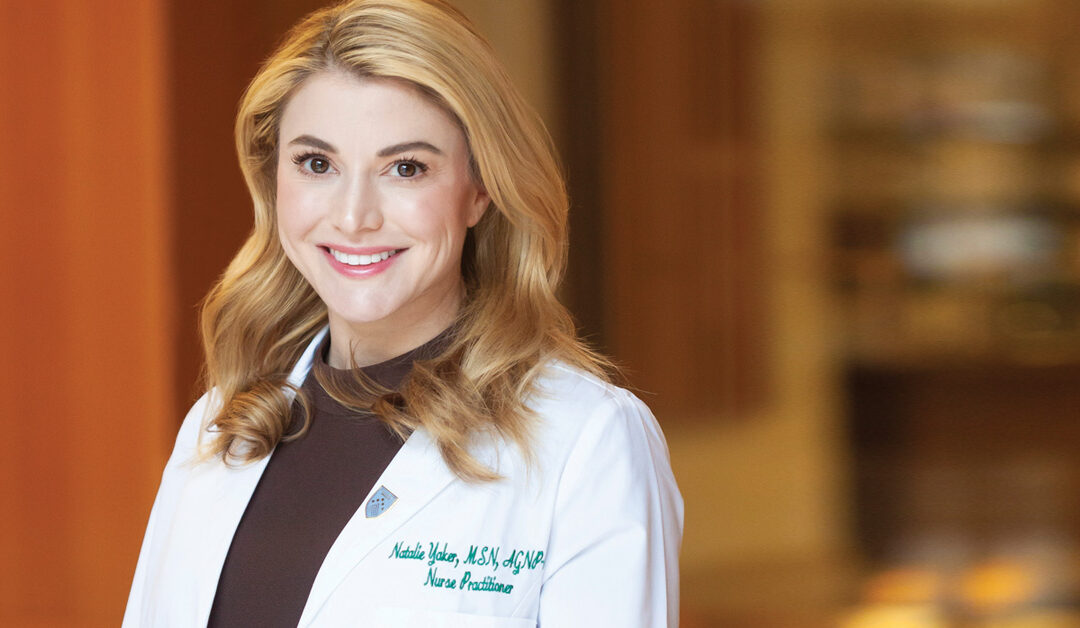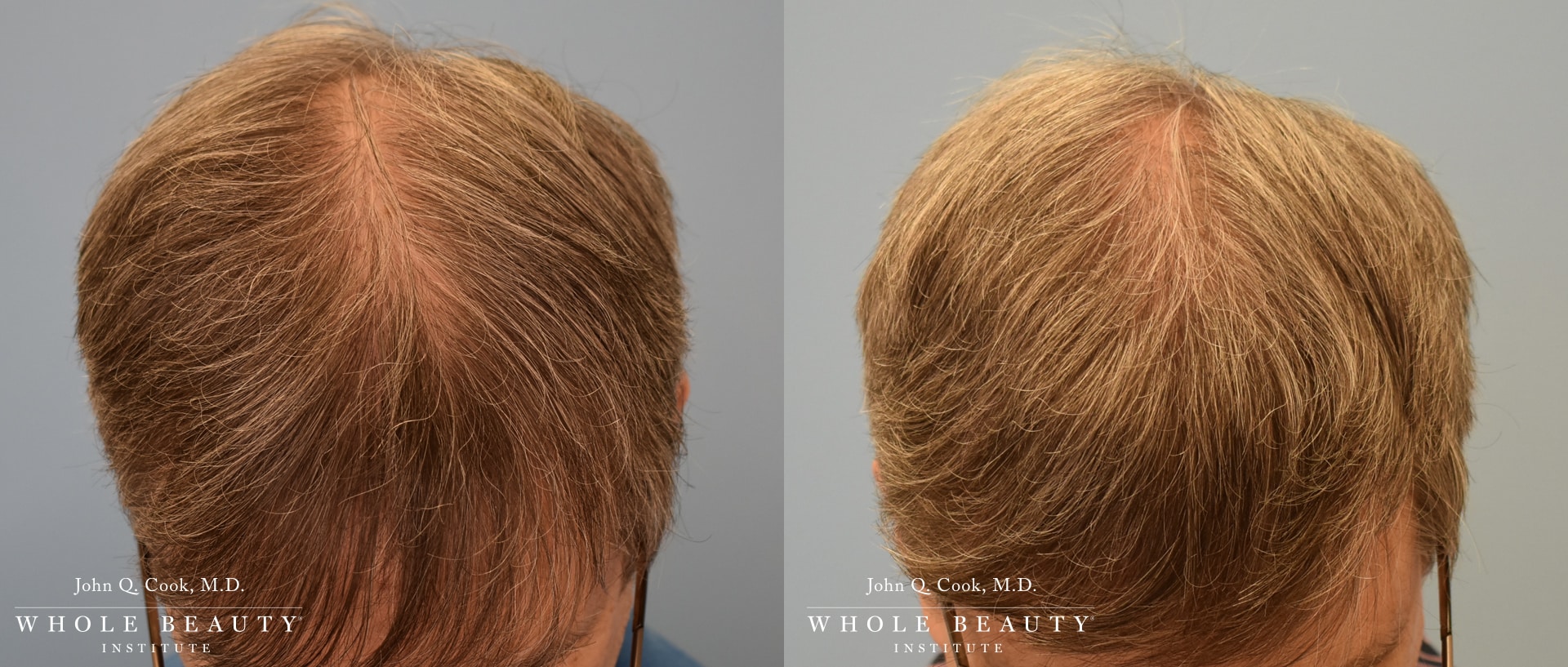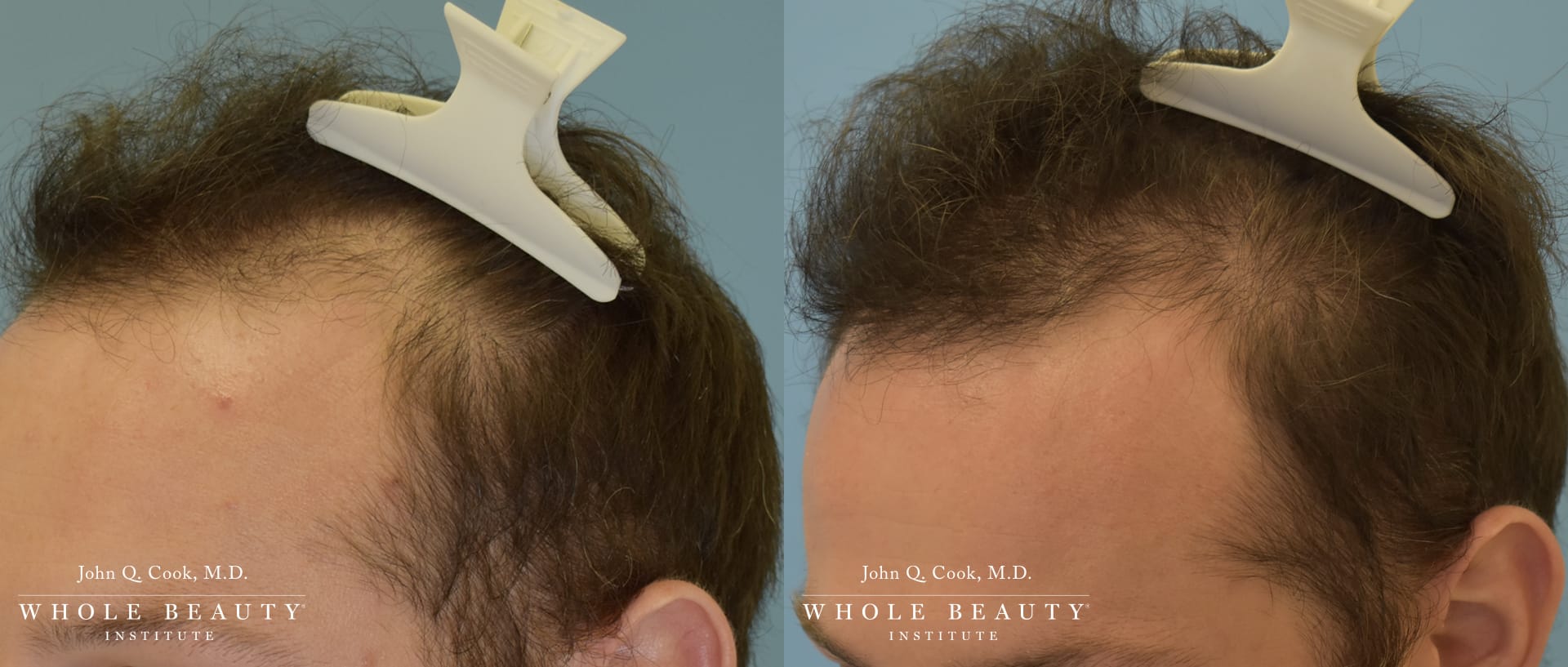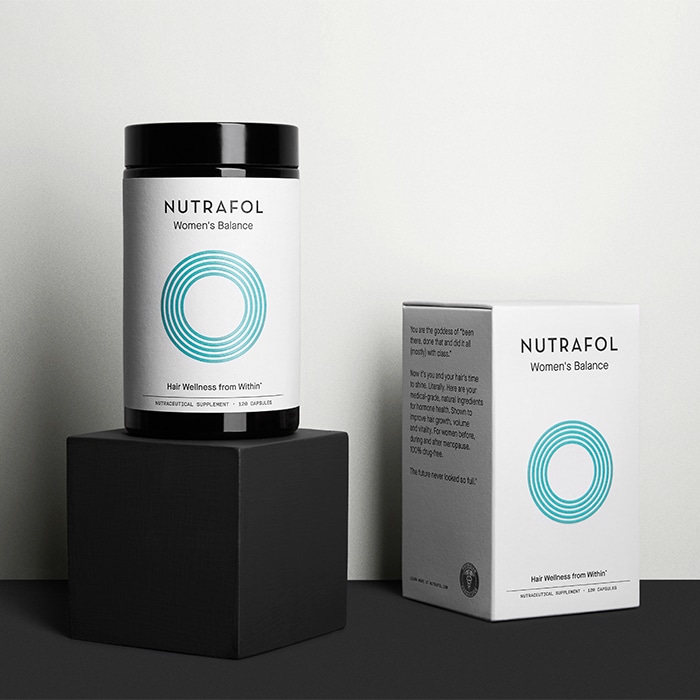Natalie Yaker, MSN, AGNP-C, CANS is a Nurse Practitioner & Certified Aesthetic Nurse Specialist with more than 10 years of experience. She specializes in Aesthetic Injections, Advanced Laser Treatments, and Non-surgical Hair Restoration. She is a certified trichologist through the US Trichology Institute, allowing her to recognize and diagnose hair and scalp disorders.
What are some causes that contribute to hair loss?
The skin and the hair are our two external organs. They are big indicators of the current health of a patient, both physically and mentally. The number one contribution to hair loss is genetics. We can fight genetics, but we cannot defy genetics. Secondary contributors to hair loss are the aging process, stress, sleeping patterns, hormonal changes, and nutritional changes. All of these factors can contribute to hair loss, especially for women.
How common is hair loss?
Hair loss is extremely common. Every decade, we lose 10 percent of our hair. Hair loss is progressive, and it’s something that affects all of us. None of us look the same way we looked when we were 18. We all are aging. Our skin is changing. Our muscles are changing. Our bones are changing. And our hair is just another organ that is changing as well. So hair loss affects everybody.
We all know we shed hair. What is the difference between a normal amount of hair shedding versus excessive hair shedding that should cause concern?
Typically, on average, we lose anywhere between 100 and 150 hairs every single day. Anything over 200 hairs, we can argue that a patient is experiencing a term called telogen effluvium, which is a fancy word for stress-induced hair shedding. This can be caused by childbirth, puberty, pregnancy, menopause, hormonal changes, death, divorce, disease, diet, weather changes, water changes, stress, genetics, chemicals, chemotherapy, and anesthesia. These are all the reasons why the hair will break, shed, thicken, grow, bald, and thin.
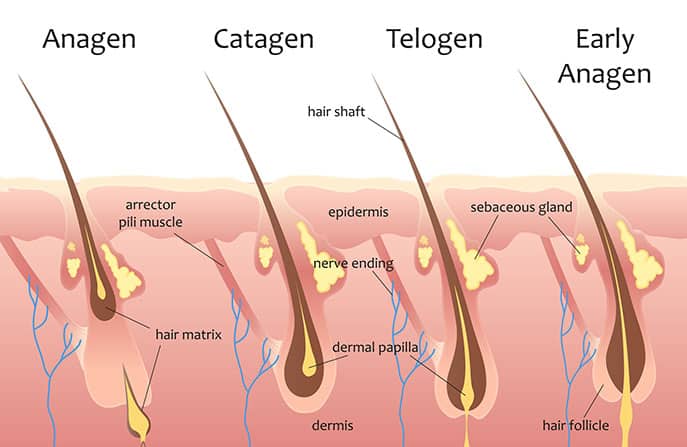
For more information, and visual guides see The Hair Shedding Visual Scale.
What should we know about washing our hair as it relates to hair loss?
Hair shedding typically occurs most when we wash our hair. Because of this, many patients become scared to wash their hair because they think it’s going to make their shedding worse.
The skin on your face is the same as the skin on your scalp. We build up dead skin, sweat, and debris every single day. Imagine the scalp is like the soil, and the hair is like the crop. The soil needs to be tended to grow vibrant crops. Cleansing our face and scalp every day makes logical sense in order to rid the buildup on the skin, scalp, and hair.
Proper scalp hygiene also ensures that hair topical medications, such as Minoxidil, are able to penetrate through the pores of the skin on the scalp.
Now, with that said, washing can also cause the hair to be dry. So, the quality of hair products we utilize is important to lock moisture into the cuticle.
For hair products, you want to stay in a pH range between 3.5 and 4. The higher the pH, the more dead skin and build-up are going to develop in the scalp, which can cause an increase in itching and dandruff. A pH of 3.5 is more acidic and better for the hair and scalp. This will help exfoliate the dead skin, debris, and build-up, and allow water to come into the cell and provide the necessary moisture.
Straighter hair has finer cuticles, and curlier hair has coarser cuticles. Coarser cuticles naturally need more oil to prevent breakage and damage.
You mentioned previously that diet can contribute to hair loss. Can you get a little more specific about that?

Essential vitamins and minerals are imperative for hair health. Ninety-seven percent of your hair is made of protein, and three percent is made of water. Protein is very important for the fortification of the strength of your hair. Iron and vitamin D are also very important. There’s a big correlation between hair loss and vitamin D deficiency, as well as iron deficiency and hair loss.
What about biotin?
Biotin, also known as B7, is made in our healthy gut. We produce biotin within the foods we eat. We can see biotin deficiencies in the malnourished, as well as those who have malabsorption of the gastrointestinal tract. For those who wish to take B7, it will not hurt, as our body will excrete what is not nutritionally necessary
In addition to hair restoration treatments, do you also recommend taking supplements?
Nutrafol has become the gold standard for supplements for hair.
If you look on the label of Nutrafol, you’ll see it has amino acids, which are the building blocks of protein, and protein makes up 97 percent of your hair. Then it has all these different vitamins, minerals, and herbs—like saw palmetto, curcumin, and ashwagandha—that are beneficial for hair growth.
Giving patients Nutrafol is a good place to start, but they still need to make sure that they are doing their annual checkups and lab work to determine if they’re truly deficient.
What kind of hair topicals do you offer to reverse hair loss?
There are two FDA approved topical formulas I prescribe for both male and female patients: topical prescriptive five percent Minoxidil + Finasteride and five percent Minoxidil. These topical prescriptions are made to order for each patient and do not include preservatives found in over-the-counter Minoxidil, such as propylene glycol and alcohol, which can dry and irritate the scalp.
Minoxidil works by altering hair growth cycles. If I have a patient who’s excessively shedding, that patient is in the telogen phase. I want to get her or him back into the anagen phase. The hair grows in phases. Anagen is the growth phase, catagen is the transition phase, and telogen is the resting and shedding phase.
Minoxidil lengths the anagen phase and shortens telogen and catagen. So, you have more hairs growing, fewer hairs resting, and less hair shedding.
Read frequently asked questions about 5% Minoxidil and 5% Minoxidil + Finasteride.

Before and after photo of patient using prescriptive topical after 2+ months.
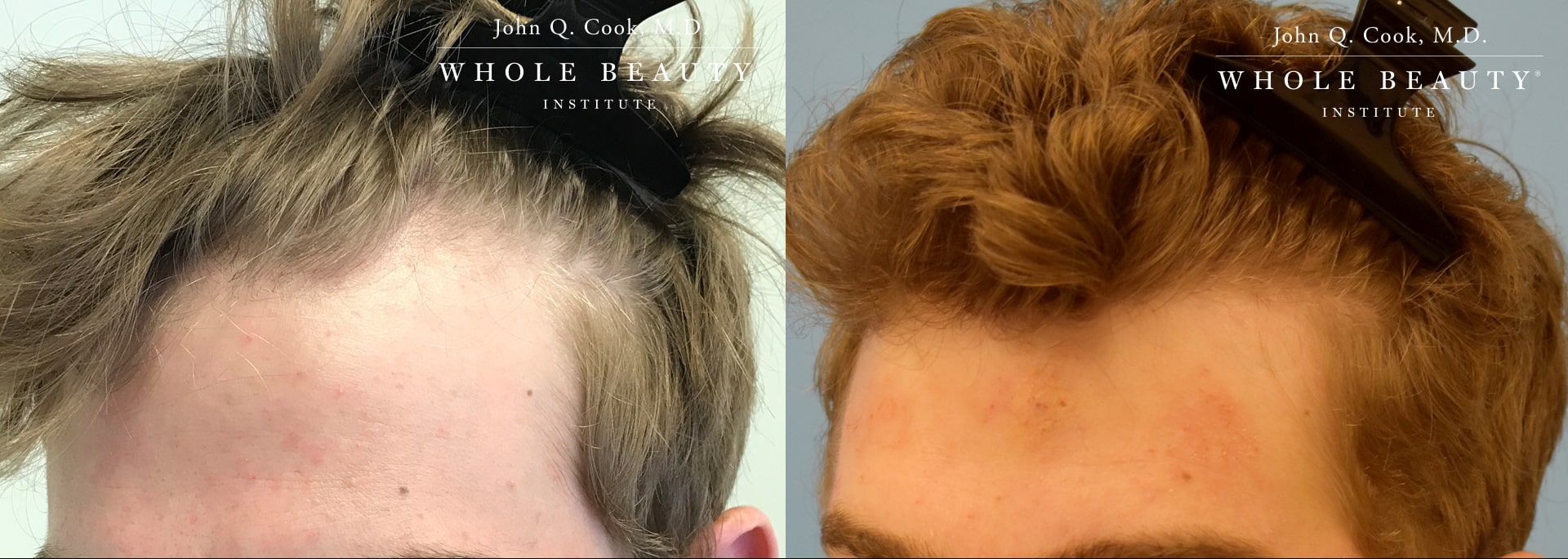
Before and after photo of patient using prescriptive topical after 20 months.
Tell us about the consultation process and what that entails?
The consultation process consists of a thorough present and past medical history. We will discuss current lifestyle habits such as nutrition, exercise, and hygiene patterns. An examination of the scalp and the hair will be done with a dermatoscope which is also known as trichoscopy, is a useful, noninvasive, adjunctive tool for the diagnosis of alopecia and other scalp and hair disorders. This comprehensive consultation will take about 60 minutes. Patients will leave with a clear understanding of their current condition as well as non-surgical treatment options.
What are your thoughts on oral vs topical minoxidil?
Head-to-head trials show both topical and oral minoxidil groups showed significant improvement in hair diameter after 6 months of treatment. Topical minoxidil is a preferred treatment option for the patients seen in the practice due to the low side effect profile as well as easy application. Oral minoxidil can cause side effects like hypertrichosis (excessive hair growth), postural hypotension, and rapid heartbeat.
Asilian A, Farmani A, Saber M. Clinical efficacy and safety of low-dose oral minoxidil versus topical solution in the improvement of androgenetic alopecia: A randomized controlled trial. J Cosmet Dermatol. 2024 Mar;23(3):949-957. doi: 10.1111/jocd.16086. Epub 2023 Nov 29. PMID: 38031516.
Are you seeing any of the GLP-1 medications that cause hair loss?
Some suggest that GLP-1 agonists may disrupt hair growth cycles or cause premature androgenetic alopecia. GLP-1 medications do decrease appetite; as a result, patients eat less and smaller quantities. For those individuals that do not supplement with vitamins and minerals, the loss of these essential items can cause hair loss, thinning, or delayed growth.
Desai DD, Sikora M, Nohria A, Bordone L, Caplan AS, Shapiro J, Lo Sicco KI. GLP-1 agonists and hair loss: a call for further investigation. Int J Dermatol. 2024 Sep;63(9):1128-1130. doi: 10.1111/ijd.17246. Epub 2024 May 13. PMID: 38741261.
Do you combine the topicals with any other in-office treatments to optimize the results?
With some patients, I’ll combine hair topical formulation with collagen induction therapy.
We extract growth factors, healing factors, and protein factors from the whole blood, spin it down in a centrifuge, and inject it back into the deep dermis where the degenerated follicle is housed. As a result, all the damaged tissue and follicles undergo regeneration.
So, to use an analogy as we did previously, if the scalp is the soil, and the hair is the crop, then think of hair topicals as the water, and the collagen induction therapy as the fertilizer.
Does laser therapy also help with hair restoration?
Yes, low-level laser therapy has been proven to increase the blood flow and circulation to the scalp by 60 to 80 percent. Nutritional-rich blood flow and circulation to the scalp can lead to better quality hair. Think of laser therapy like sunlight to assist in helping grow a plant.
I can do laser therapy with an at-home device. What’s the difference between laser therapy caps from a physician versus what people can buy directly?
The difference is the number of diodes in the device. Anything over about 200 diodes is physician grade. Anything under that is cosmeceutical grade.
It is important that whichever device a patient selects, whether it’s an at-home or in-office device, they are consistent with using the device as recommended.
How long does it typically take to see results?
Hair restoration is a marathon, not a sprint. It can take on average nine months for patients to see the potential changes in their scalp and hair. The most important factors with hair restoration are consistency, compliance, and commitment.
So if it takes nine months to restore hair, does that mean if you keep doing your treatments for 18 months, your hair will be even fuller?
Patients can continue to have improvement in the quality and texture of their hair well past the nine-month period. As we know, everybody responds differently to medical treatment. Maintaining a new baseline, as well as preventing further hair loss, are some realistic goals and expectations.
If you get started on hair restoration treatments and you stop, can you actually suffer even more hair loss?
The goals of non-surgical hair restoration are improving the quality of your hair, the texture of hair, the number of hairs per millimeter, the diameter of the hair, and ensuring you do not get worse.
If I can provide a new baseline for a patient that they can maintain, that is an optimal outcome.
Patients have to keep in mind their genetic makeup, the aging process, and hormonal changes that are happening over time. Deciding to discontinue treatment can result in the natural degression of our hair.
Contact the Whole Beauty® Institute and Nurse Practitioner Natalie Yaker
Schedule your hair restoration consultation by calling 312-751-2112 (Chicago Gold Coast office) or 847-446-7562 (Winnetka’s North Shore office). You can also submit a contact form online.


